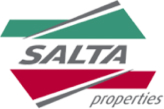Historical heritage refers to the time since post-contact settlement through to the more modern period, with historic archaeological sites considered to be more than 75 years old. These sites provide a window into Australia’s past, representing favored past-times, town hey-days, former bustling industries, and are places that can invoke both joy and sorrow.
These places are all around us, from early railway lines and mining industries to the first schools, post-offices, churches and housing, the need to protect and preserve these remnants of years gone by is important.
At Archaeological Excavations we provide expert service and advice when it comes to protecting the historic past. We provide historic heritage assessments to our clients at the planning stage of development, and as part of the cultural heritage management plan process. Archaeological Excavations also undertakes historical archaeological investigations as part of the heritage legislation in Victoria, and we guide our clients through the consent and permit processes to advise on the management of these historical places.
Common questions about Historical Heritage Assessments
When is a Historical Heritage Assessment required?
Victoria is home to thousands of recorded and unrecorded historical sites. A historical archaeological site is defined as a place (other than a shipwreck) which contains an artefact, deposit or feature which is 75 or more years old; provides information of past activity in the State; requires archaeological methods to reveal information about the place; and is not only associated with Aboriginal occupation, under the Heritage Act 2017.
For any development that may harm or disturb a current or potential historical place considered to be significant to the history and development of Victoria, background research should be undertaken prior to any works taking place. This can be conducted in many forms, but the result is much the same. This research aims to inform our clients on the settlement, development, or historical use of the place and how your proposed development may impact the local, state or national significance of that place. The Heritage Act 2017 protects all historical places, whether they are documented or not, and it is paramount to ensure that none of these places is damaged or destroyed before, during, or after any development works.
These research documents can also aid in the development of management strategies should historical heritage places be subject to disturbance or damage or encountered during the course of the works. They can also form part of the permit or consent application process to Heritage Victoria.
Services
At Archaeological Excavations, our team of nationally and internationally experienced heritage specialists provide the following services for your historical heritage needs:
- Historical Heritage Assessments
- Heritage Impact Statements
- Advice and Guidance through the Consent Application process
- Archaeological Investigations / Excavations
Projects
Below is some information on projects Archaeological Excavations has worked on
Lyndhurst
The project involved an inland port at Lyndhurst as proposed by Salta Properties. The development would bring freight from Melbourne Harbour by rail to Lyndhurst where it would then be dispatched to trucks. The project aims to solve the issue of inner-city traffic congestion and provide greater opportunities for imports and exports in the southeast of Melbourne as it provides an alternative to road-based container transfer.
Drysdale Bypass
Drysdale Bypass is Bellarine Peninsula’s biggest road infrastructure project. Running 6 km from Jetty Road to the north of Whitcombes Road, the project involved the construction of four new traffic lanes separated by a central median, along with the construction of intersections, roundabouts and traffic lights.










